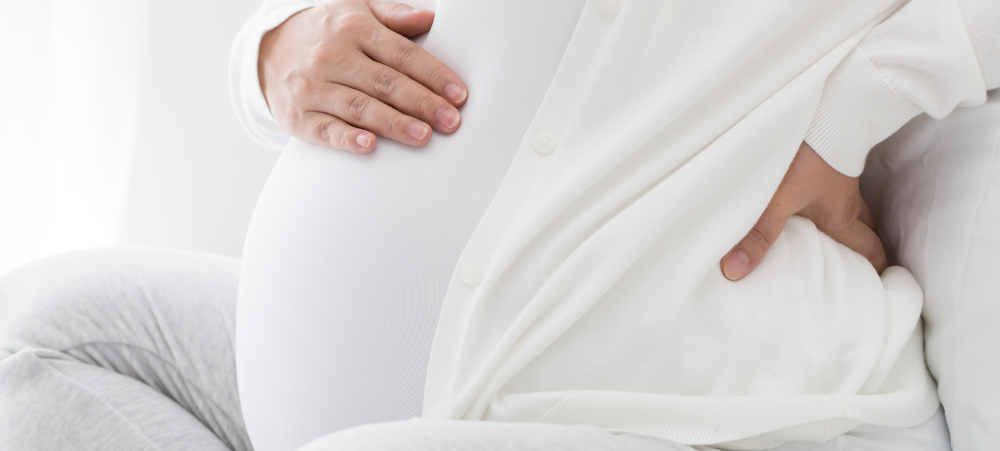Pregnancy is one of the most beautiful miracles of nature, to have a human being formed inside us. This is a time filled with excitement and joy, but can also be overwhelming as we are expected to know everything there is to know about pregnancy, what is normal and what is not, what is cause for concern versus what is not and overall what to expect.
This article is meant to give more information about PROM (Prelabor rupture of membranes); how common it is, what some of the associated risks are, and what we need to do in case we suspect PROM.
How common is PROM?
PROM (prelabor rupture of membranes) is very common in pregnancy, in fact, it is estimated that between 20%-30% of pregnancies are affected by PROM, but frequencies of up to 40% have been reported 1. PROM occurs when the amniotic sac ruptures and amniotic fluid starts to leak.
What is this Amniotic fluid (water)?
Amniotic fluid plays a very important role in supporting the fetus during pregnancy. The mother’s body produces amniotic fluid as soon as 2 weeks after conception. The most important role of the amniotic fluid is to protect the baby against physical shocks from outside. It also helps the fetus to move around in the womb, consequently, allowing the fetus to develop his muscles. Maintaining a constant temperature – The amniotic fluid is typically 1 degree Celsius higher than the mother’s body temperature. This helps the fetus to maintain his body temperature. At full gestational age, SROM (spontaneous rupture of membranes) occurs, which usually occurs after labor pains commence and is a normal part of the labor process. However, sometimes PROM occurs, and this could lead to complications.
Complications associated with PROM:
PROM is defined as the rupture of membranes (amniotic sac) and leakage of amniotic fluid before labor begins. This can happen after 37 weeks of gestation. If the rupture of membranes happens prior to 37 weeks of gestation, the condition is termed PPROM (preterm premature rupture of membranes)2. It is important to be able to identify PROM as sometimes it is a gush of water that comes out which is obvious, and sometimes it is a gradual continuous leakage which is not very obvious, and can thus be mistaken for urine. Diagnosing PROM is very important for proper management of the pregnancy and delayed diagnosis could lead to complications for both mother and baby. The two direct and most important complications of PROM are:
- Chorioamnionitis, which is an acute inflammation of the membranes & chorion of placenta, from ascending polymicrobial bacterial infection due to ruptured membranes and
- Preterm delivery (PTD)1
These complications could lead to neonatal respiratory distress syndrome (RDS), foetal distress, neonatal sepsis, congenital infections like pneumonia and intraventricular haemorrhage (IVH) and increased neonatal deaths1.
According to an article in the South African Medical Journal, deaths due to prematurity had patient associated avoidable factors in 30% of the cases. The top 5 factors were:
- Inappropriate response to rupture of membranes.
- Delay in seeking medical attention during labor.
- Non-initiation of antenatal care.
- Booking late in pregnancy.
- Infrequent visits to antenatal clinics3
Diagnosis of PROM is important and facilitates the commencement of appropriate therapy and could lead to reduction in complications.
PROM often occurs when the pregnant woman is not in a healthcare environment. For this reason, it becomes very important to identify and know when it is PROM, in order to seek medical care and thus reduce the associated risks. When the rupture of membranes occurs or the water breaks, there is usually a gush of fluid that comes out; this is the obvious sign of PROM. The challenge becomes when this classic gush of fluid doesn’t occur, and only a gradual continual leak occurs; in this case how do you know if it is amniotic fluid or just a urine leak which is common in pregnancy?
The AMNIOPADTM is a self test kit used to test for leakage of amniotic fluid (water breaking) during pregnancy. The test comes in the form of a panty liner; it’s highly effective, easy to use, results are easy to interpret, and is the only test available in South Africa that can be used at home. This easy-to-use home test kit allows you to detect probable leakage of amniotic fluid whenever you encounter unidentified wetness, or among women with a history of premature membrane rupture. AMNIOPADTM panty liner changes colour when it comes into contact with fluid of pH levels greater than or equal to 6.5. Amniotic fluid pH levels are greater than 6.5.
How to use:
Simply attach the special AMNIOPADTM panty liner to your underwear and get on with your day. When you feel a fluid leak, check for a colour change on the yellow background. The pad colour change can be partial or complete (any intensity, shape, size or location). Note: a colour change appears within 10 minutes following a fluid leak. If there is a colour change to blue or green, amniotic fluid may be leaking from your uterus, or you may have a vaginal infection. You should consult your physician or go to the hospital without delay. If the panty liner remains yellow or turns yellow after 10 minutes, the fluid leak is probably urine, which is common during pregnancy. If you continue to experience vaginal wetness, apply a new panty liner and repeat the test.
Any minimal amount of amniotic fluid leakage which can be sensed as wetness by the user will create a visible blue or green stain. For further diagnosis and medical care, report the results to your physician. AMNIOPADTM panty liners are recommended for screening either high-risk or normal pregnancies. Leaking amniotic fluid increases the risk of infection to both mother and foetus and early detection can help to:
- Prevent complications or premature birth.
- Identify a possible membrane rupture, especially after amniocentesis.
- Confirm that your water has broken so that you arrive at the hospital in time for a safe delivery.
READING YOUR RESULTS: 10 minutes after removal, look for a colour change on the panty liner.
The AMNIOPADTM offers you peace of mind when uncertain about when it is time to seek medical attention. Taking the test in the comfort of your home will help you know if the wetness experienced is due to amniotic fluid leaking or urine which is common during pregnancy. The AMNIOPADTM is also avail in UK, USA, NZ and Australia.
For more information about how to buy the AMNIOPADTM, visit:
www.coincido.co.za or www.Facebook.com/Amniopad
Tel: 011 589 9089
References:
- Iloanosi NE, Evaluation of pregnant women admitted with prelabour rupture of membranes (PROM); Research Report for M Med (Obstetrics and Gynaecology) 2013 Jun
- Source: James Alexander et al, Seminars in Perinatology, Vol 20, No 5, 1996: pp 369-374; Mercer et al, Am J Obstet Gynecol, 1999
- LLOYD, Lizel Georgi; DE WITT, Wilma. Neonatal mortality in South Africa: How are we doing and can we do better?. South African Medical Journal, [S.l.], v. 103, n. 8, p. 518-519, jul. 2013. ISSN 2078-5135
- Amniopad Package Insert
- What is PROM and is it a Cause for Concern in Pregnancy? - March 12, 2018
- Has my water broken or is it just urine? - February 28, 2018
- Hey Ladies are you feeling Wet down there?No need to worry ……. - February 27, 2018





